You’ve seen it… over, and over, and over again:
“The only thing readers read are the headlines.”
“The headline is the most critical part of any post.”
“You should spend 90% of your time on the headline; 10% on everything else.”
In fact, pretty much every article you’ve ever read on epic, click-inducing, page-one-of-Google-ranking blog posts have one thing in common: it all comes down to the headline.
And so you buy in.
More than that, you slave. You sweat. You swap. You steal. And finally, after hours churning out duds, you arrive at that wonderful moment: the perfect headline, one that even Gawker and Mashable would be proud of.
You’re sure nobody could resist it. And, in fact, nobody does. The clicks start pouring in.
There’s just one problem.
Those clicks are all you get.
No comments. No signups. No shares. No scrolls.
The question is: Why? What went wrong?
How Popular Headline Advice Can Lead You to the Dark Side
So what did go wrong?
After all, you followed the golden rule of blogging stardom.
You poured yourself into your headline — just like they told you — and tossed your leftovers into “everything else” — just like they told you.
At the risk of being sacrilegious, the cold hard truth is that there’s a name for what you just did and a reason why your readers won’t be coming back.
It’s called click bait — and it’s what happens when your headline is by far the best thing about your post.
The world of online writing is a scary, unforgiving place and nothing is more unforgivable than following up the perfect headline with crap.
That’s why this post isn’t about headlines.
Why Fear Is Your Best Friend If You Want Readers to Keep Reading
Your headline is important — no doubt about it.
But once it’s done its job — luring readers to click on your post — you’re playing a different game altogether.
Then it becomes about what’s next: your post’s opening lines.
Get those wrong and your impressive click-through rate will be rivaled only by your disastrous bounce rate.
How can you save yourself from the Internet’s collective hatred of empty follow-through and all of its inevitable consequences?
In a word: fear.
Fear is the most universal, dominant, and primal human motivator.
And the key, as counterintuitive as it sounds, is to stop hiding from your fears and embrace them.
Why?
Because your own fears are the most powerful connection points you have to reach the very people who scare you the most: your readers.
So, to help you grab your audience by the throat right from the start, let’s look at the ten most common fears we as humans face and exactly how the opening lines of Boost Blog Traffic’s ten most terrifying posts evoke them.
1. The Fear of Failure
Let’s kick this off with a doozy.
We all fear failure.
Why?
Because deep down in our souls lies the belief that our failure to overcome a problem — be it personal or professional — means that we ourselves are failures.
This is precisely why the problems that beset us are so fear-inducing.
We’re afraid that a failed pitch will reveal we’re failed entrepreneurs.
We’re afraid that a failed article will reveal we’re failed writers.
We’re afraid that a failed project will reveal we’re failed leaders.
This fear of failure, however, is what makes — in the words of copywriting legend Dan Kennedy — the “Problem-Agitation-Solution” formula “the most reliable sales formula ever invented.”
The structure is simple.
First, define the problem in simple and straightforward terms.
Second, agitate the problem. As Kennedy explains, “You should have readers mentally wringing their hands, pacing the room, saying, ‘This has got to stop! I’ve got to do something about this! What can I do about this? If only there were an answer!'”
Third, reveal the solution.
Article: Why Your Blog Doesn’t Stand a Chance in Hell of Succeeding (and What to Do About It)
Whether she meant to or not, Leanne Regalla’s post follows Kennedy’s formula perfectly.
She opens with a simple presentation of the problem:
But you know you haven’t got a chance in hell of seeing that kind of success unless you can truly engage your readers and keep them interested over the long haul.
Of course, the big question is how? Engagement is an elusive creature.
Then she agitates:
You worry that you’re not connecting, that your words don’t resonate deeply with your readers, but you’ll be damned if you can figure out the magic formula.
And the truth is, unless you can find a way to connect powerfully with your readers, your blog is doomed to failure.
Notice Leanne’s word choice: “you haven’t got a chance in hell,” “but you’ll be damned if you can figure out the magic formula,” and “your blog is doomed to failure.”
The most common mistake writers make when trying to evoke fear is not driving the problem home.
We assume that our audience already feels the fear… but they don’t. Most problems are merely complaints. They’re neither top of the mind nor top of the heart.
That’s why Leanne’s post is so masterful.
She doesn’t assume her audience feels the full force of what failure entails, so she exposes them to its consequences.
To do this in your own opening lines, think about agitating in terms of what I call the “it gets worse, much, much worse” principle. Make a list of everything that failing over the problem will cost your reader: personally, professionally, financially, and (as our next fear focuses on) relationally.
Only after exposing them to the full consequences of failure are you then ready to move on to the solution.
2. The Fear of Rejection
Fear of failure is all about not overcoming specific problems — or rather, being overcome by those problems.
Fear of rejection, on the other hand, isn’t about problems. It’s about people.
As PsychCentral explains, “On a cognitive level, we may be afraid that rejection confirms our worst fear — perhaps that we’re unlovable, or that we’re destined to be alone, or that we have little worth or value.”
In other words, our fear of rejection stems from an underlying, deep-seated belief that other people’s rejection of us will reveal the fact we’re fundamentally unacceptable.
This plays itself out in myriad ways and is the primary reason why the $2.2-billion online dating industry is dominated by articles promising to relieve the fear of rejection.
At the professional level, Inc.’s Geoffrey James nails it: “Rejection is just an event that’s quickly over. But the fear of rejection… ah!… that can last a lifetime.”
Article: How to Build Relationships with Popular Bloggers (Even If It Scares You Silly)
Naturally, Katharine Di Cerbo starts with the problem:
After all, without help, how will you compete with the Internet’s 150 million other blogs?
Popular bloggers already have large audiences. They can introduce your content to thousands of readers you’d never otherwise reach. They can introduce you to other powerful people online.
But something has been holding you back.
Then she reveals the deeper, more existential reason behind it:
The fear of rejection.
“Why would famous bloggers pay any attention to me?”
“They’ll know I’m a newbie and scoff in disgust!”
One of the best ways to evoke the fear of rejection is to give it a voice — and not just any voice, but your reader’s own voice.
Articulating their fears vividly evokes them and — at the same time — develops empathy and connection by showing you understand.
This is one of the tactics I used in this post’s opening lines.
Once you’ve given verbal life to something like the fear of rejection, be sure your hinge to the solution offers a way forward:
Fortunately, though, there is a way to befriend influencers and get them to promote your work without straying too far from your comfort zone.
In fact, if you do it right, outreach can easily feel less scary, more natural, and even invigorating.
3. The Fear of Missing Out
The fear of missing out is so common that it even has its own acronym: FOMO.
Given its link to social media, you might think that the fear of missing out is petty compared to our first two fears.
But do not underestimate FOMO’s audience-grabbing power.
Beneath its banal surface, FOMO is driven by what persuasion expert Robert Cialdini calls the principle of scarcity. Basically, the harder it is to get something, the more we want it.
When this want is coupled with the impression that other people — lots of other people or people you admire — are getting the thing you can’t, the fear of missing out goes into overdrive.
Naturally, FOMO works wonders when it comes to making offers and crafting opt-out buttons with “negative consequences”:
But how do you incorporate it into your blog post introductions?
Article: 14 Devious Tactics for Getting More Comments on Your Blog Posts
Jon Morrow’s post opens with a congratulatory tone, and then turns the corner into what many might consider a shallow problem:
Most folks who start a blog quit within a few weeks, their dreams of fame and glory crushed by a cold and uncaring world who doesn’t give a damn what they think.
But you?
You hung in there. You kept writing. You’re even managing to get a little bit of traffic.
And you’re pleased with your progress. Rightfully so.
The only problem:
You’re not getting many comments.
The issue isn’t glaring; it’s not life and death.
But it is incredibly frustrating — most notably because other people are succeeding.
And that’s exactly what Jon sketches next:
But never dozens or hundreds of comments like some of the big blogs.
Granted, you’re probably not getting anywhere close to the traffic they are, but you can’t help wondering…
Are you doing something wrong?
Is there some trick you’re missing?
And most importantly, what can you do to get more comments?
Well, let’s see if we can help you out.
Notice two things.
One, when dealing with the fear of missing out, getting nitty-gritty is paramount.
Two, once again putting words in your readers’ mouths — in this case, the questions behind their FOMO — not only hooks them, it functions perfectly as a segue into your solution to their fear.
4. The Fear of Not Knowing
Despite what you’ve heard, ignorance is not bliss.
In fact, not knowing is especially painful when it comes to being confused about existential questions like, “Who do I want to be?” as well as practical questions like, “What should I do next?”
With the former, we’re afraid of not knowing who we are… or even who we want to be. This lack of a personal foundation is precarious.
With the latter — “What’s next?” — we’re afraid of not knowing the path forward.
Together they form a terrifying and bewildering one-two punch.
Kevan Lee stresses just how dominant this fear is in How “I Don’t Know” Can Make You an Authority in Your Industry:
How do you deal with this fear? More importantly, how do you grab hold of a reader struggling with not knowing?
Article: 21 Posts That’ll Help You Decide What Type of Writer to Be
Just like Glen Long does, you should start with common ground:
A writer whose work is an authentic expression of your true self.
Then turn toward the fear-inducing question mark holding your audience back:
And sometimes you wonder if you should just give up.
After all, if you were destined to be a writer, it wouldn’t be this hard, would it?
Glen gets right to the point: the feeling of confusion is palpable.
What’s unclear is the cause.
That’s why, next, he identifies the root issue:
More specifically, you haven’t decided what kind of writer you want to be.
Quite often, your audience doesn’t know why they’re confused.
After all, that’s the nature of not knowing. They’re missing some vital piece to the puzzle, and this is where you get to not only leverage their fear but demystify it and move toward an answer.
5. The Fear of Obscurity
Growing up, none of us wanted to be picked last for kickball or, even worse, get forgotten on the playground after school.
As we get older, this fear of obscurity — of being forgotten — does nothing but intensify. As adults, we still dread the thought of being left out or left behind.
In truth, our fears grow as we do: we don’t just want to be invited, we want to make such a big impression that we’re remembered by others even after we’re gone.
Feeling obscure sucks, especially when that obscurity is holding us back from professional and financial success.
But it is profoundly universal. Even the most successful people fear being alone and feel more than a little insignificant now and again.
Here’s how Jon Morrow taps this universal fear.
Article: How to Be Unforgettable
I’m lying in bed in a nursing home, sick and dying, gasping for breath, knowing that any minute now I’ll be passing into the great beyond. And I’m scared, really, really scared, because I’m all alone, and I don’t know what’s going to happen, and oh God, it hurts so much…
But then it stops. My body goes limp, my last breath rattles from my lungs, my bowels release, and the heart monitor beside the bed flat lines, loudly proclaiming the end of the great and mighty Jon Morrow.
Jon wastes no time getting to the meat of the matter.
To do that, he uses a strategy that works well for many other fears… but arguably best for obscurity.
Humans don’t remember numbers, facts, or statistics.
Data has little bite to it.
What we do remember are stories, the human element.
This article hits obscurity on the head by telling a very real, very human story right off the bat.
What’s more, it digs deep into the fear of being forgotten:
If we’re being honest, I think maybe that’s one of the reasons many of us start blogging. There’s something immensely comforting about knowing your thoughts are out there for the whole world to read. You could kick the bucket tomorrow, but your words will live on, teaching, inspiring, and taking root in the minds of readers for generations to come.
Not only does the article begin with a memorable story, Jon immediately clarifies exactly what the moral of the story is… what the reader is supposed to remember.
Being memorable yourself is the best and sneakiest way to reach an audience who themselves fear obscurity.
6. The Fear of Looking Stupid
Of all the fears we experience, looking stupid is relatively silly.
Whether you call it pride or ego, we all want to appear smart, not just in front of the people we admire but even in front our own inner critic. That fear takes shape in an all-too-common refrain: “Don’t publish this. It’s stupid. People might think you’re crazy.”
Even more than wanting to look like we have all the answers, we dread making mistakes.
Unfortunately, we are only human. We all make mistakes, and sometimes, they’re — yes — pretty stupid.
So how do you empathize with a reader who’s feeling dumb?
You start by letting them off the hook. But just a little.
Article: A Crash Course in Google Analytics for Anyone Who’s Sick of Feeling Like an Idiot
From the headline to the first subhead — “The Reason Most Bloggers Secretly Hate Google Analytics” — Casey Kluver focuses on feeling stupid.
Why? Because it makes them feel dumb.
Maybe you feel the same. You look at the dashboard with all of its tables and figures and charts and you don’t have the first clue what most of it means. You poke around for a few minutes hoping it will all suddenly become clear, then you just shrug and give up.
Let’s face it, you probably didn’t major in data science, and you probably don’t get excited about numbers or data — particularly when you can’t connect them to something you care about.
And there’s the free pass. We’re given, “Yes, it’s confusing, but it isn’t entirely your fault,” and that’s where you hook your reader. We don’t like feeling dumb, but we like it even less when our stupidity is our own fault.
After exposing our secret hatred, Casey goes after the real culprit: “Nothing is more mortifying than a stupid mistake you were entirely responsible for.”
The article then offers a life-preserver that’s meant to relieve the reader’s sense of stupidity.
By first illustrating and then giving your reader a break about how stupid they’re feeling — notice, not how stupid they are — they’re far more likely to keep reading.
You see, while relentlessly driving the point home works well for some fears, giving your reader a hard time about their stupidity without cutting them some slack leads to alienation.
Lastly, when it comes to the fear of looking stupid, be sure to stress that you are or were in the same exact boat. That shared experience isn’t just another meaningful point of connection, it makes turning toward your solution feel authentic.
7. The Fear of Inadequacy
Inadequacy is a close relative to stupidity, but it’s a little sneakier.
Whereas the fear of looking stupid shouts, inadequacy whispers.
After all, when you’re feeling dumb, you usually know you’re feeling dumb.
When you’re worrying about inadequacy, though, it often shows up subtly through little internal comments about how you aren’t enough. The fear of inadequacy raises its head with a snide remark or a queasy uncertainty about your ability to handle the task before you.
As a writer, this means that connecting to your audience through their fear of inadequacy demands showing them exactly where they’re falling short.
Article: Are You Damaging Your Email List with These 11 Rookie Mistakes?
Paul Jarvis’s article begins by touching on inadequacy before the reader even sees the first word of the post. Right in the title, its whisper makes an appearance as a haunting question… and you should do the same.
Paul then drills down.
It’s almost as if creating an email list is an instant cure for all blogging ills.
But in truth, most bloggers make some embarrassingly basic mistakes with their lists.
Any one of those mistakes could seriously damage your ability to grow your list.
Make a few of them, and you might as well not have a list at all.
The risk that the reader is inadequate is becoming real and tangible.
Immediately, the article turns to address what causes inadequacy, and this is exactly what readers secretly seeking to feel adequate are after.
Next, they want a solution to their fear. And so the article goes on to list clear, specific things that cause inadequacy, and more importantly, how not to be inadequate.
It’s never that simple.
By avoiding the rookie mistakes laid out in this post, you can get your list working for you and start reaping the rewards you keep hearing about from other bloggers.
So choose a mistake to fix today. Fix another one tomorrow.
And before long, you’ll be the one raving on and on about the importance of email.
8. The Fear of Embarrassment
For all its apparent shallowness, the fear of embarrassment is a powerful motivator.
Embarrassment has similar roots to stupidity and inadequacy. It revolves around not wanting to look bad in front of others or feel bad about ourselves.
Embarrassment is the first internal blush we experience before the full public onslaught of humiliation and shame.
It makes us want to hide, withdraw, or never stick our necks out in the first place.
And this is precisely what gives embarrassment its power to hook.
It’s a precursor. It’s the thought, “I hope nobody ever finds out.”
Leaning on the fear of embarrassment is especially helpful when you’re writing about topics that have to do with appearance. But don’t limit yourself just to physical appearance. Embarrassment holds people back whenever they’re about to take something private and put it out there: a new post, a new website, a new social account, a new product feature, a new… you get the idea.
By outing that internal fear and what’s driving it, you form an emotional bond with your audience, one that’s incredibly intimate.
Article: Why Your Site Gets Such Pitiful Traffic (and What to Do about It)
The truth:
Probably a lot.
It doesn’t take much to strike the embarrassment chord. According to this post of Jon Morrow’s, not only is the reader doing something wrong, they’re doing a lot wrong.
The article creates the feeling that its reader is a real rookie, like they’re fumbling… and pretty soon everyone else is going to know.
The good news?
You know that darkness you’re stumbling around in? Well, I’m going to turn on the light.
Nobody in the world has the power to make all the obstacles disappear, but I can at least help you see what you’re tripping over. Some of the mistakes you’re making might surprise you.
If you’re not getting the traffic you think you should be, the following are 10 of the most common reasons why:
After starting with embarrassment, Jon turns around and gently nudges the reader in the right direction.
This is an excellent way to use embarrassment, as a lead into encouragement, a way into a solution.
But the embarrassment isn’t over:
Big mistake. Here’s why:
When you want to learn how to play the guitar, do you just sit down and start plucking strings until a song comes out?
Jon asks a leading question and his answer is both blunt and unexpected. So we keep reading, surprised and now more than a little embarrassed we’ve been so foolish.
However, he’s not done yet.
*strangles you across the Internet*
Quick, before you do anything else, go read these posts:
It seems a lot like tough love, and it absolutely is.
Tone like this is hard to master, but Jon walks the line between embarrassing his audience – exposing their weaknesses — and insulting them.
Naturally, you want your audience to feel a little silly, maybe even a little bad. But don’t go too far.
To use the fear of embarrassment effectively, don’t overstep your boundaries (unless your audience comes to you specifically for written reprimanding). Instead, emphasize and play on how silly we can all be sometimes.
9. The Fear of Being Boring
With all the incredible content that’s immediately accessible to us, today’s reader has absolutely no patience for boredom.
Of all the fears so far, boredom — both being bored and being boring — is the most “first world.” After all, boredom requires a measure of safety and comfort.
However, whether or not we have a right to fear boredom doesn’t matter: it still happens… and we’d do anything to avoid it.
Don’t get me wrong. To infuse boredom itself into your post is a terrible idea.
Directly addressing the fear of boredom, though, is how you show your empathy with bored readers.
Article: 6 Quick Tricks to Transform Crappy Ideas into Gleaming Nuggets of Undeniable Genius
Glen Long goes right for the fear-of-being-boring jugular:
That even your best ideas might be a little… ordinary.
Particularly if you dream of online success. The Internet hates ordinary.
Actually, scratch that; the Internet totally ignores ordinary. It doesn’t even register on the chart.
So naturally, you feel envious when other writers get noticed with ideas that aren’t ordinary at all.
Surprisingly, the antidote for boredom isn’t found where most people look:
But most of the time, that’s not how the creative process works.
Great ideas don’t simply appear, like unicorns stepping out of the mist; they start out crappy, then evolve.
What’s really great about this post (apart from the wonderful imagery) is how it addresses the mundane versus the extraordinary.
It starts with a fundamental misconception about unboring ideas, and then reveals the truth.
Hardly a boring topic.
What’s more, the language isn’t boring either. Quite the opposite — it’s vivid, interesting, and driven by metaphors.
And if you wait for the perfect idea to present itself on a silver platter, you could waste a ton of time.
So instead, start with an idea that has a kernel of merit, even if it’s been explored by others countless times before, and make it the starting point for something great.
Boredom is like dirty snow after a long, bitter February or the cobwebs before spring cleaning.
To use the fear of being boring, you have to find the cobwebs, and then break out the broom and feather duster.
In other words, colorful language and vivid imagery are not only perfect ways to illustrate boredom and its traffic-killing dangers, they’re also the antidote to address it.
10. The Fear of Pain
Our last fear is a doozy: pain.
And not just any pain… agonizing pain; pain at its absolute limit.
Writing about pain is difficult.
Pain is uncomfortable. We don’t want to be in pain, and we definitely don’t want to be in so much pain we turn to words like “unbearable” to describe it.
That means if you’re going to evoke the fear of pain, your words had better have the same impact as a Mack truck.
Article: Suicide, Shame, and the Painful Truth about Accomplishing Your Goals
No wasted words here. No useless detail.
Every syllable of Jon Morrow’s creates a visceral picture of what this agony must have felt like. The pain was “unimaginable,” but you can’t help but imagine it… even if you don’t want to.
“Sorry folks,” I said. “Looks like GoToWebinar is having some technical difficulties. Can everyone hear me now?”
They said they could. We finished the webinar. Immediately afterward, I went to bed and stayed there for the next 16 hours.
And the worst part?
It was a normal day. I’d nearly collapsed on several webinars, not just that one. You might’ve even been on one of them.
Part of me worried if I was about to die. Another part hoped I would, just to be free of the pain.
I was at the end of my rope. One way or another, things were about to change.
The contrast between the inner feelings and the outer appearance is equally uncomfortable to consider.
But the pain train doesn’t stop there:
Not just every now and again, either. I was in pain 24 hours a day, seven days a week.
And it was like kryptonite.
Where I used to have endless energy, I struggled just to stay alert for a few hours each day. Where I used to always be the smartest guy in the room, I went through the day feeling cloudy and confused. Where I used to have unshakable confidence, I was now afraid to get on the phone with a client for fear of falling apart in front of them.
Pay attention to the use of contrast. Before it was inner versus outer; this time it’s between the past and the present.
That’s one of the places pain’s power lies: the enormous gulf between how things should be and the way they are.
Exploiting the fear of pain and using it to connect with your readers takes vulnerability and honesty. It means exposing your own darkest moments and dragging them – in all their gory glory — out into the light of day.
It also takes time.
This is easily one of the longest introductions in Boost Blog Traffic’s history.
In fact, Jon doesn’t even mention blogging until he’s dragged you through 1,512 excruciating words tied together with subheads like “On suicide,” “On shame,” and “The painful truth about accomplishing your goals.”
Stoke Your Reader’s Fears and They Won’t Dare Look Away
The world of online writing is a scary place. And click bait – crafting an irresistible headline with zero follow-through to back it up – is the one unforgivable sin.
And yet, overcoming the urge to produce click bait as well as overcoming your fears both lie not in running from your fears, but embracing them.
Your fears are the most powerful, empathy-producing, audience-grabbing resource at your disposal.
Fear isn’t your enemy. It’s your ally, especially when it comes to your post’s introduction.
Take hold of your fears. Call them out by name. Unearth each one in all its unholy, detailed brilliance.
In other words, use them… unless, of course, you’re scared.

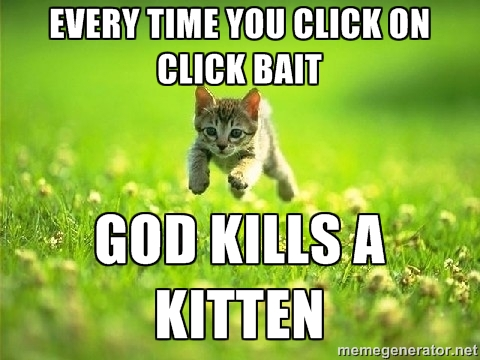


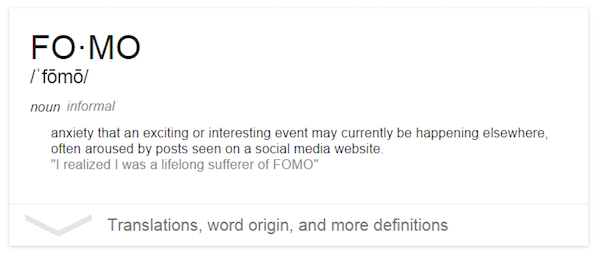
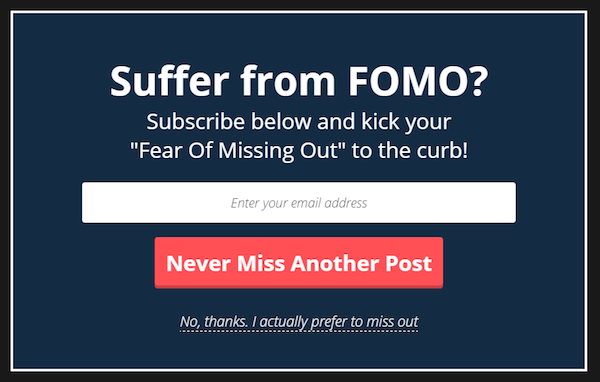
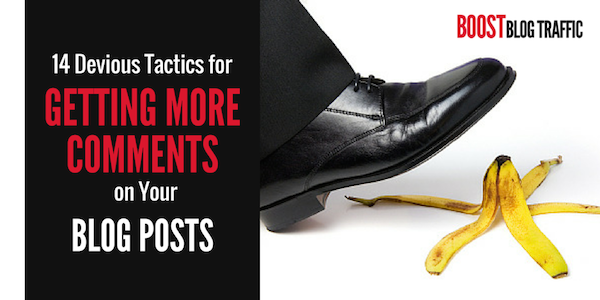



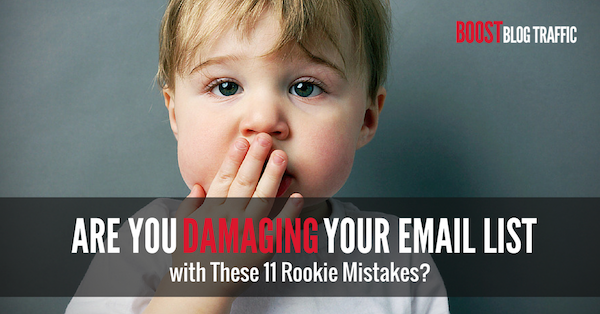


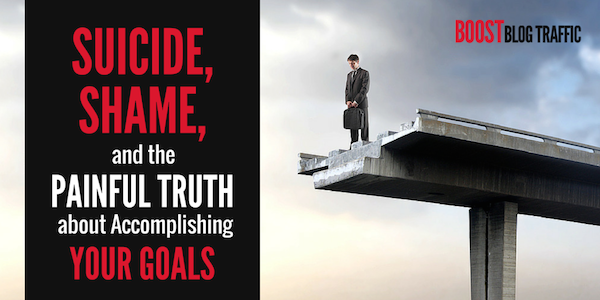




Hey,
Great post lots of great information here, this is my recipe for the perfect headline.
Bold + Controversy + Scarcity = Headline!
I also like to sometimes say things like
Your Sucks!, 5 Tips To Smash Your Next
This formula has worked really well for me…
Thanks
Joe Elliott
Thanks Joe … I love the whole “Your [Blank] Sucks!” formula.
I do the same thing with “You Hate [Blank] … But I Love It” or “There’s Only One Thing About Your [Blank] that’s Killing Your [Results].”
Anytime I get a chance to (mildly) insult my audience … I’ll take it. 😉
WOW! Really informative post. I personally use Actionable keywords that forces users to click. Like “25 Actionable Ideas to Create Content like a PRO”.
Thanks
Hi Aaron,
Welcome to BBT!
Love your thoughts on the importance of openings. You’re right — too, too many people worry about “clicks” and completely ignore silly things like conversions. What good are those clicks if they don’t turn into subscribers, comments, and tweets? 🙂
I don’t believe I’ve come across your work before, but I’m going to go find you on Copyblogger. Great work, Aaron. Will definitely be tweeting!
– @kevinjduncan
Thanks so much Kevin, esp. for the warm welcome.
Yeah, track me down on Copyblogger. I’m SUPER excited that after two published posts with those awesome folks back in 2015 (and then about a year of waiting for another chance), I finally get to write for them again next month.
Of course, not as excited as I am to see this giant pieces go up on BBT.
Hi Aaron
I find opening the most interesting part of blog posts to write, but often also the most difficult one (I never start with writing my openings. I often write them last.)
This is a great collection of examples that every blogger can add to their swipe file 🙂
Great to see you here on Boost Blog Traffic!
I’m with you on that Henneke. Intros are very important piece to hooking readers.
And likewise, a great article to share and add to the ole’ swipe files!
Great article Aaron! 🙂
If only I had a dollar for every time someone said that: “I’m with you on that Henneke.”
I’m just happy THIS time it was about something I wrote. 😉
So good to be seen here on BBT. 🙂
And yes … it was a great experience gathering together all these intro swipes.
Thanks for the kind words, Henneke.
Thanks for the positive advice on how to draw in readers without ‘luring’ them with clickbait, Aaron. No matter how beautifully written a post, or topic, never getting read is our deepest fear as writers. By giving us constructive and creative tools to combat this issue, you allay our fears of going forth and writing without readership!
A sincere thank you.
You’re welcome Mai!
And I loved the delicious irony of aligning (allaying, wink wink) our own fears as writing with our reader’s fears.
Thanks for the super kind feedback. (I was scared you wouldn’t like it.)
Hey Aaron!
Congrats on the guest post (it’s a great one).
I’m a newb blogger. I’m getting ready to launch my blog next week. I’ve read a lot about how important headlines are. And it makes sense. So I’ve been practicing a lot. I try to put a lot of effort into my headlines but I’m beginning to feel like I should put in even more. Being to over the top and “click baity” is something I’ve worried about.
I’ve never really thought about clicks/views not mattering if they’re not converting, but you’re so right.
The fear of failure almost always gets my attention. I think that’s the biggest one for me.
What do you think about split testing headlines? I’ve heard that you can get good results this way.
Thanks!
Hi Eli … awesome to be a part of your “newb blogger” journey.
As far as being over the top … check out some of the fake Gawker headline generators (there’s super fun). 🙂
I’ve really A/B tested headline for blog posts (just for static webpages and landing pages).
But, I do sorta test them with the email subjects I send out to my list whenever I post something new.
Haha those are fun.
Cool! Thanks Aaron.
How would you advice a new blogger to test my headlines if I don’t have an email list yet?
Hi Moshe, unfortunately I don’t really know any cheats. 😉
Honestly … download Jon’s Headline Formula PDF. That thing is amazing!
Other than stealing your headlines (which you should totally do), you just gotta keep trying them out. And then when you’ve got enough traction on Twitter you should totally try out different tweets on the same article and just see which ones get the clicks!
oops … *really = rarely (which actually equals “never”)
Hi, Aaron, great post.
It helped me a charm.
I often find myself scuffling down to move on my keys after writing a headline. It is the introduction that holds me back starting to write a blog post.
If I have a bag of ideas, and some opening ideas, I will be a super-human.
No doubt psychology plays a role here. Knowing what readers are craving for, and tapping their emotional part of the brain hooks them in.
You rock!
Akshay~
Thanks Akshay … I’m a compulsive outliner. I find that REALLY helps me with the writing process so I can basically jump in wherever I’m most inspired and then circle back on the sticking points later (like the intro).
Aaron, great article and solid advice backed with research and knowledge. This is the reason I like BBT articles as they dig deep in important topics and give real value. I believe it is a great resource of information for new and intermediate bloggers. Cheers.
Totally agree. BBT articles are no joke. One of the few stellar resources that NEVER indulges in clickbait.
Thanks for the kind comment, Ahmad.
Hi Aaron,
I first read your headline and actually thought for a second that this was another devious fear-based sales tactic, where sales people tell stories that they made up trying to sell their products. JK,JK. I know BBT will never allow those types of posts.
This is a creative way to get your visitors hooked and want to learn more. Nice share, and I like the examples too.
Thanks for sharing
HA! Thx Mickiyas!
Working through all those examples was incredibly helpful for me as a writer. Super glad it was helpful for you as a reader too.
Hi Aaron
Even by Jon Morrow’s exceptional standards, your headline was outstanding. In fact, it was ‘too good to ignore’.
So I’m so glad you delivered on your promise. Because sometimes, when I read the first few lines of a post, my immediate thought is ‘get me outta here’.
Just like Henneke above, I find writing openings a challenge. But, unlike her, I always write them first.
This goes back to fear again. Fear that if the opening is crap then the rest of my efforts are wasted. And I think that fear is more than justified.
Lest you think more highly of me than you ought, Kevin, the BBT team (esp. Glen) really helped out with the headline.
But I’ll still take the compliment. 😉
For myself, I don’t really have a set time I write intros, but I tend more to Henneke’s pattern.
Could not agree more. An opening is everything to your viewers. It’s crucial to keeping a reader hooked and engaged. Great tips can’t wait to try!
Let me know if you write something with one of the fears. I’d LOVE to see it in action.
🙂
Aaron, what a great topic. So glad you tackled it. I think writers are afraid to tap into those fears sometimes and bring them to the surface. But when it’s done right, it’s really powerful.
Thanks, Leanne.
Gotta say, your post (and especially the headline-meets-intro combo) was awesome to include! Super helpful.
Aaron! You hit the nail on the head perfectly. If only people would follow you more closely, we’d then have a lot less people who write the ‘boring’ articles, because they fear what will happen if they take a risk to improve.
Hope to see you on BBT again soon!
Thanks,
Ross @LTPLife
I’ve been saying that for years, Ross: “If only people would follow me more closely.”
😉
No, but all joking aside, thanks for the compliments.
And yes … the word is my follow up on infusing JOY into your openings will be coming out here on BBT next month.
Well Aaron, I hope that word is true! Very excited to read your next one.
You and me both, Ross. 😉
I’m curious. How well do some of these suggestions work in the “real” world (i.e. – not in the “how to blog” or “how to make money online” niches)?
I suppose they could work in a self-improvement niche (weight loss, fitness, etc). But, I’m finding it hard to envision using them for other niches.
I dunno. Maybe I’m just being too cynical.
Good post though. Thanks.
Good question, Wally. I’ve used this type of pattern a TON in my own writing, but that’s been almost exclusively for publications like BBT or other business and leadership sites.
Demian Farnworth has two amazing posts on the PAS formula I mentioned form Dan Kennedy (that’s basically the foundation of everything else):
http://thecopybot.com/potent-little-sales-formula/
http://www.copyblogger.com/problem-agitate-solve/
Both of those expand on it.
Hi Aaron,
Epic headline! And I knew you would deliver because your post is on BBT.
I have one more fear for you: the fear of getting left behind. We live in such a fast paced world online and I always feel like everyone else is whizzing past me in the achievement stakes, while I’m plodding along like the proverbial tortoise. Every time I have a eureka moment about an idea for a post, I live in fear someone else is going to write it, and do a better job.
Otherwise, I think you pretty well nailed all my other anxieties!
Cheers, Mel
I totally identify with you … “tortoise” and “eureka.”
In fact, I’m pretty manic all through the writing process: “This is AMAZING. This SUCKS.”
And great additional fear: similar to FOMO, but I think you could zero in esp. on getting left behind when it comes to new technologies (that’s one of the ways I get suckered into trying social media automation tools and sign-up plugin). 🙂
Thanks.
Aaron,
First, thanks for spending the time and energy to round up all of these posts…29 (I think) links to really great content. And, don’t you just want to call out everyone who writes a great headline but don’t deliver? A bit like journalism training…the headline grabs the reader, the lead holds the reader.
Great job and glad to see you on BBT.
Ciao!
Super glad to be seen here on BBT myself!
Rounding up those posts was such a good exercise for myself as a writer.
Plus Glen took me to task more than once on my own intro. Gotta love a sharp shooting editor!
What if your blog is about more serious, academic matters..how do you get more clicks then. I don’t think buzzfeed style headlines would work
Dileo … I agree (mostly). If your audience knows they’re coming to you for more “serious, academic matters,” then the rules for holding attention change. On the surface anyway. Still, one of the reasons I love books like Freakanomics is the mixing of academia and narrative.
Wow.. great article thank you for sharing.
Thanks for saying so, Yashu. Always encouraging to hear that kind of feedback.
This is such a complete post! Oh god but just by reading it … I don’t know, I can’t picture myself doing it, I can follow a few of the tips but there’s some that are just too much for me, I would feel like I’m just kissing their butt or something like that, I feel like they know they’re so wanted and they would only see me as one of their “fans”. But yeah it is something that needs to be done, I might start with someone who’s on a lower level than those I have in mind, but still, people are not very kind, at least bloggers in my city and country, they feel like you just want to be friends with them so they give you contacts and that kind of stuff. I hate that, I just truly want to create friendships in the circle I move in, I don’t even want them to be talking about me on their blogs or anything that big… I’ll give it a go anyway, I would probably have a drink before it lol
Thank you for this article, it’s soooo interesting!
First off, thanks for the kind words.
Second, I can understand your trepidation and distaste for how a LOT of online “networking” goes. But as long as what you’re producing is genuinely helpful … then I wouldn’t worry too much about appearing like a suck up.
Even better, write a post about how scared you are of coming off like nothing more than a fan. You’re totally not the only person who is afraid of being misinterpreted.
😉
Let me know here in the comments if you end up doing that. I’d love to check it out. My buddy Jason Quey wrote an amazing post about influence marketing that might be helpful: https://sumome.com/stories/influencer-marketing-super-connector
I’m going to be putting these strategies to use! Given that my website is for parents and educators of kids/teens, this is a great opportunity to use some of the behavioral science that is mentioned. It’s true that people respond based on their feelings. We are emotional creatures!
I already reworked my opt-in form and hoping this approach helps attract subscribers. I also took a bold step and gave a shout out to a well-known Psychologist that I referenced in one of my posts and she ended up re-tweeting my article.
I was wondering if anyone could share some insight on what are reasonable/attainable goals when it comes to the reach to click ratio. For a newbie, I want to set realistic standards, but also know if I’m falling flat! Thank you so much:)
I peaked at your site.
Great use of emotions in your headlines! You’re right … you’ve definitely got a ripe niche for exactly that kind of writing.
As for click ratio: two things.
One, check out these studies with cumulative data:
http://www.smartinsights.com/internet-advertising/internet-advertising-analytics/display-advertising-clickthrough-rates/
http://www.smartinsights.com/email-marketing/email-communications-strategy/statistics-sources-for-email-marketing/
https://www.impactbnd.com/blog/what-is-a-good-landing-page-conversion-rate
Two, my favorite response of all time to that question was from Peep Laja on my ConversionXL piece from last year: http://conversionxl.com/an-irresistible-offer-4-tips-to-personalize-your-sales-funnel/
“Better than what you had last time you sent an email. Ignore averages.”
Hi Aaron,
Thanks so much for taking a look at my site. I appreciate you doing so and the quick feedback on my headlines!
Those links provide valuable research material. I love all the easy to read graphics/charts. The Facebook ad click-through graphic and others of that sort made a lot of sense to me. I appreciate having this reliable info at my fingertips to reference. Taking a closer look at these stats helps me realize the importance of growth over time. I’ve been trying to make sense of my site stats and it’s a lot like staring at a super conservative investment portfolio waiting to get rich quick!
I’m so grateful for resources like this to keep us on our toes, while inspiring motivation!
Thank you.
Awesome!
And I actually just followed you on Twitter and Buffered that post of yours in Friendship, parenting and social media.
Hey Aaron,
That was a great article.
It’s refreshingly simple breakdown of all the different types of fear you can use in your marketing.
It’s worth mentioning that there’s a time and place to use fear. And, when you use it entirely depends on your level of credibility. If you have zero credibility and you are trying to sell with fear then you’ll fail.
Of course… you can always borrow credibility from someone or something else 😉
Agreed … just like urgency and scarcity, fear is a tricky emotion and is always in danger of being over used (or coming off as manipulative).
I think you’re dead on about “borrow[ing] credibility from someone or something else.” That’s SO KEY when it comes to establishing the reality of someone’s fear.
Hey Aaron,
Awesome article. Headlines are very important, yes and a superb opening to it – nothing like that.
“Well begun is battle half won” rightly said and well justified by your article.
Anton Chekov, one of the greatest short story writers of all time, said an interesting thing about how he wrote the opening paragraphs of his short stories. He said he never used the opening paragraphs from his final draft but he’d delete them and start from the next ones. This, he said, ensured that the opening was natural and not something that you had created with utter cautiousness to impress the world. Just felt like sharing this.
Again, thanks for this awesome post. Keep up the great work.
YES!!!
I can’t tell you how much I agree with that tip from Chekov.
When I was an undergraduate studying English and creative writing, I had a professor who forced us to do the same thing. Sometimes he’d even say, “Cut the whole first page.”
Demian Farnworth has an amazing piece on David Sedaris’ Tricks to Great First Sentences: http://thecopybot.com/sedaris-first-sentence/
It’s full of examples!
Great read, Aaron. Thanks for taking the time to write this piece.
The fear of embarrassment is the most interesting to me. It’s an incredibly powerful motivator in all areas of life. It’s why people are afraid to get out of their comfort zone, it’s why stage fright exists, it’s why people stay at jobs they hate for years, it’s why people don’t speak up at parties.
It’s a shame more people don’t use that fear in content marketing.
That one always stands out to me to … it seems so subtle compared to the others (more petty), but it’s so powerful!
Andy Crestodina has a great one on that as it relates to what hold websites and content back from publishing: https://www.orbitmedia.com/blog/fear-and-websites-in-chicago/
Awesome post, Aaron. Thank you for calling out the click bait!! It’s a serious problem. I think you do a great job of address the main point of content marketing here- providing unique value to your audience- and you give a great formula for how to do so!
I’m a huge fan of formulas … that’s one of the reasons I SO enjoy putting together posts like this.
And yes, it bears repeating ALL the time: content marketing is about value!
Hi, Aaron,
I appreciate your insights on writing headlines, because yours definitely caught my attention! It’s so true isn’t it, we all fear something, whether we want to admit it or not. I aim to write compelling titles for each blog post, but I’ll be exploring more fear-induced ones.
Thanks,
Sue
Let me know if you write any particularly terrifying posts … I’d be happy to check it out and share it (you know, if it scares me).
I’ve actually got another post coming out soon on ConversionXL with a bunch of data on fear headlines versus happy headlines. Guess which one wins the most … 😉
“The Fear of Embarrassment” resonates with people who are ugly, and this is not a subjective opinion but the truth, for example Stephen Hawkins. Most people tend to run and hide behind a veil of obscurity, yet Hawkins does not have an embarrassment problem because he has other strengths which outweigh that potential problem.
The entire beauty industry is built on embarrassment, shame and overcoming it. Great point on writing and profiting by helping readers come out of their self-imposed shell.
Thanks, Leonard.
I think what makes these move beyond just manipulation is using our own fears as a starting point. I like the point about Hawkins and the “veil of obscurity.” It take courage … but being open-handed and honest about what holds us back humanizes both us and our writing itself.
You’re spot on when you say that fear is universal. That’s one reason why this post is so great- anyone feeling any of these types of fears no longer feels alone, and has more courage to overcome them.
Numbers 4 and 7 resonate with me- it’s hard to feel confident in your own abilities when it always feels like there’s someone else out there who knows more, or who knows something you don’t.
Thanks for the tips. These are certainly helpful ideas when it comes to jumping off the deep-end and publishing that all-important starter!
So universal! Number 4 and 7 certainly overlap.
Number one is (well) number one for me. Everything else seems to stem from the fear of failure.
Super encouraged to hear it was helpful. I should have another post next month here on BoostBlogTraffic all about opening with JOY.
Looking forward to the Joy focus!
: )
Me too, Rachel! 🙂
I agree that the tactics suggested here can be very useful in getting people to read your stuff. At the same time, may I respectfully suggest a larger viewpoint?
The world is about more than just getting people to read our stuff. While our focus may be on nurturing engagement, please consider the potential impact of those techniques which not only acknowledge, but deliberately attempt to foster and increase fear. There is more than enough fear in our world — just look at the current political campaigns! Fear causes tunnel vision, narrowing our ability to be creative and make conscious choices.
What if, instead, we chose our language and marketing with an eye towards raising the hopes and confidence of our readers? What if they were drawn to us because we *inspire* them?
Each of us does what we think we need to do. I just think it important to point out that words can have power, and maybe we need to ask ourselves if we are using that power for greater good.
I actually REALLY agree with you (which is one of the reasons I’m so pumped to see my article on joy go up here).
But let me just say … thank you for bringing up this point!
With fear, the balance comes from first embracing our fears and using our own experience of them to connect with readers who’re just like us: human.
This makes the experience of fear not only more authentic and cathartic, but “above board” (i.e., ethical and in-the-end uplifting) for readers and writers alike.
I’ve got a little motto I say ALL the time (in fact, I’m building my presentation on Content Strategy at this year’s Unbounce conference around it): #letsgetrejected
That’s the line I told myself over and over again when I first started going after this whole online writing thingy a few years ago … and was SUPER scared.
Check out what I wrote here for a taste: http://iconicontent.com/blog/rejection-and-success/
Oh … and as for the power of words for good: I wrote this personal one about my dad: http://iconicontent.com/blog/love-lives-in-the-details/
PS: I wandered over to your site and just shared this one … http://www.thefullnessofyourpower.com/the-practicality-of-happiness/
What’s been challenging for me is identifying the line between vulnerability and acknowledgement of fears versus stoking them. The former builds trust; the latter (including the tactic of deliberate “agitation”) is where I think we need to re-evaluate how we connect with our readers/clients/fellow human beings.
PS. I like your posts, and thank you! 🙂
That’s a really good distinction.
Unbounce just released a post on “The Case Against Negative and Fear-Based Headlines” (http://unbounce.com/content-marketing/negative-and-fear-based-headlines/).
It addresses this whole debate (super timely).
From a sales (i.e., effectiveness) perspective, I’m okay with “agitation,” esp. if it’s done in a way that wakes people up to the full scale reality of what can (and will) happen if they ignore a problem.
In my own mind, I try to frame it like a doctor telling a patient they need to change … for their own good.
Still a fine line.
And again, thanks for much for your encouraging words.
I agree that there are some people who benefit from having the thumbscrews twisted “for their own good.” At the same time,
(1) not everyone responds positively to being negatively agitated — that Unbounce article you link to does a great job of discussing the issue, and
(2) at what point does trying to make more sales come at the risk of someone’s personal integrity?
Still looking forward to your take on Joy. : )
The ‘getting comments’ one is the one that gets me. I used to tell myself it was because blogging had changed since I started in 2009, when I got a lot more comments, but now I realise it’s just the fact that *I* need to change! Quite how I’ll do that is the next question.
I can identify. FOR SURE!
Two things I’ve found along those lines …
1) End with a question or invitation to contribute something specific (rather than wrapping the article up in a nice bow). Actually, Chelsea Baldwin (who wrote this recently on BBT //smartblogger.com/republishing-on-medium/) has a stellar piece on questions and the “open loop”: http://getcopypower.com/rhetorical-questions/
2) Be ruthlessly honest about your shortcomings and failures (that last one has generated not just comments, but direct emails back from my blog’s newsletter like it did with this one http://iconicontent.com/blog/struggles-and-thankfulness/).
Dangerous, scary stuff (that second one esp.) … but that’s kinda the point, right? 😉
Hey Aaron,
This is one of those posts that need to be bookmarked. I am going to refer to this every single time I write something. No kidding.
Cheers, Peter
Wow, Peter. That’s high praise.
Thx so much!
Hey Aaron,
Great work here on this post.
Certainly, the opening is really important and, quite frankly, is the second most important part of any post or even copy. It’s about getting people to slide down that slippery slope one way or another.
I think fear is a great emotion to use and I read something recently (I can’t remember from where) but it was a survey confirming that people took action based on fear MORE than anything else.
I need to work on that for sure.
Thanks for sharing this great information. Now, I’m off to share and check out some more of your work.
– Andrew
Hi Andrew,
Thanks for the kinds words.
And (naturally) I totally agree. What psychologists call “loss aversion” is primarily what we’re talking about when it comes to the motivational power of fear: people are far more inspired to take action when they risk losing something than they are by the prospect of winning.
Let me know if you find any of my other articles helpful.
🙂
Hi Aaron
I did enjoy the contents and even the comments
I am a newbie and suppose that is why I want to just stop reading and cry my eyes out for the pain that Jon had to endure.
You got me
It sucks that such a talented man must suffer physically for the rest of his life.
How the heck does it work.
So you see … I have noticed your headlines and they are pretty damn spot on
However I shalk for the rest of the evening sulk all by myself about one man and his condition and wonder how I can give him my legs and my voice and whatever would feel fair to me.. just give him my blessings for now … Love you all…?
As painful as it is … my guess is that suffering is one of the very reasons Jon is such an amazing communicator.
Obviously tons of natural talent and hard work, but translating pain into progress — letting if fuel you rather than defeat you — is exactly why I’m consistently blown away by his ability to mix blogging advice with incredible wisdom!
Yup! I agree with that tip
Hear, hear, Baselo! 😉
Hi there, Aaron!
Congrats with one more awesome post published!
The title has caught my attention at once, as I was writing about fears, too (for Michael Brenner’s blog and The Blog Press in particular). The thing is, I concentrated on fears of writers and bloggers themselves, not fears of their audience to use 🙂 So, it was interesting to read by all means!
Never thought of grabbing my readers by throats before 🙂 But maybe that’s the reason why I am not at BBT yet. Lol.
The fears of failure, looking stupid, and not knowing are my best friends actually, so I think about using them for grabbing the audience now. Thanks for inspiring me 🙂
Cheers,
Lesley
Hi Lesley,
Thanks so much for chiming in!
Let me know when your own fear-enduing posts go up … I’d love to check them out.
I’m more of a failure and inadequacy man myself. In fact, just yesterday I got an email from Unbounce’s conference promoter — where I’ll be speaking this June — and my IMMEDIATE thought (before I read it) was, “Oh no, they’ve cut me. They’ve found someone better.”
Actually, it was just a reminder to send in my title and summary … but (my, oh my) how close to the surface those fears lie. 😉
Understand you, Aaron!
When I get some follow-up emails from top blogs, my first thought is smth like “Oh no, something is wrong!” 🙂 But evrth is great, as a rule.
Good luck with the conference! I am sure you’ll rock them! 😉
I’ll share my new fear post with you by all means. Meanwhile, you are welcome to check the published one I mentioned in my previous comment (I hope, Jon and the team don’t mind having some links in comments here): https://marketinginsidergroup.com/content-marketing/inside-fear-key-confident-content-converts/
Cheers,
Lesley
Yeah … hope they don’t mind. 😉
I clicked through. Great post, love the visuals and the blow-by-blow on the uses of fear. Just Buffered the article along with a separate share for this quote: “Fall in love with your fear.”
Thanks for all the support!
The thing about reading articles on BBT is that you don’t come off with few new lessons.
You’re loaded with a bundle of them.
It’s like having a website where you collect guides for building a successful online business as a blogger.
And this headline is just as well kick-butt. You know, like you’re set before a hefty bowl of steak and you’re required to knife through everything. Sorry, but can’t touch that.
I gained a lot from reading this post, Aaron, and from reading the entire comments here up to this point. The detailed examples you delivered to most commenters sure stands you out as someone who knows his chops.
And I quite share the same feelings as those commenters who used to have great blog comments but are having few counts now.
I believe if we all up our ante, like the folks here at BBT, we’ll most likely never have to bother with that issue anymore.
But the sad thing?
BBT and other huge blogs would catch on quick and quintuple their effort.
So?
Let’s just stick with being human, being ourselves, and giving loads of value however way we can.
Our best is better even if it doesn’t measure up to some experts’ standard.
Thanks for sharing, Aaron.
– Yusuff Busayo
Wow, Yusuff … thanks for the incredibly thorough and thoughtful response.
I couldn’t help but chuckle at these lines: “But the sad thing? BBT and other huge blogs would catch on quick and quintuple their effort.”
Stellar closing advice as well … couldn’t agree more.
I just followed you on Twitter and loaded up your “Open Letter” article into my Buffer.
🙂
Wow. This is epic, Aaron.
A great way to start the month ( I know I’m late to the party :< )
I've always been fascinated with how readers' emotions can be influenced. Thanks for giving me some new superpowers' tricks.
Btw, thanks for the clickbait meme. It got me laughing. A subtle reminder that it's not all about fantastic titles.
Thanks so much, Adeleye.
I alway enjoy being called “epic.” 😉
I like that meme too.
This one was a delight to write, so hopefully it showed in the final product (although delight and fear don’t really seem to go together).
Hey Aaron – thanks for sharing my posts!
But yes, Icy – I’m totally there with you on the frustration that comes from not getting the kind of comments you feel like you should have coming your way… especially when you used to get so many more & now you’re not.
I really like Aaron’s piece of advice about being upfront about your shortcomings/failures/general human-ness. I’ve gotten scores of emails back from readers from that. It’s still a lower comment count, but at least you know you’re creating such a wonderful experience for your reader that they feel compelled to reach out to you in a more direct way… which I think is a MUCH better sign of doing something right than the comment count.
Huge thumbs up Chelsea (and super happy to share your stuff whenever possible)!
Hi Aaron,
Such a great read. Refreshing to see a true breakdown of the use of fear as a motivator. I love the use of popular posts as examples. There is really no better curator than the masses, these articles got the traffic they did for good reason.
Every time I read one of your articles it makes me realize just how great you are at analyzing success, and breaking it down piece by piece. It’s really no wonder you are a consultant.
Keep up the awesome work, looking forward to reading more from you!
Thx, Nathaniel. That means a lot.
I loved using those popular posts as examples myself … super helpful for my own writing.
Hey Aaron, Awesome post. I really like the detailing, tone and sentence framing of your blog. It is conversational yet informative.
I have a question, sometimes we need to send some marketing emails which are too, promotional and use click-bait technique, which increases the open rate but do not impact on the conversions. And, in the case of a blog, even if we write a super headline and make our reader click to read it, How can we make sure he does not jump-off the first paragraph or half of the blog as sometimes we want a specific action to be taken by him after reading the blog. Hence does the CTA placement to be aligned with the content or does it look too promotional?
I know lot of questions but to ask in one line, how do I create action driven blogs?
Great questions, Ravish.
I like to think of every step in the process of subject to open to email body to click to the ultimate page as separate CTAs.
For example, Joanna Wiebe has this AWESOME infographic https://copyhackers.com/2015/03/measure-your-copy-infographic/
Basically, give “Every Element 1 Job To Do.”
Thinking about like that helps me keep the momentum going so it doesn’t end up being click bait along the way.
Naturally, as long as you deliver on all your promises … nobody will accuse you of being too promotional.
Thank for quick reply.
You are awesome.
Keep rocking and updating us
Cheers!
I know a headline is the most important part of a blog post that sells your post. If you spend more time on creating an awesome headline, people love to read the whole article and share it, link to it and your blog grow. So thanks to you now I am gonna write more amazing headlines than I was doing before.
Thanks for the note, Sanjay. Just make sure no kittens get killed. 😉
Great stuff as usual, Aaron! I especially like how you discuss empathy as a critical piece of the puzzle. Pointing to readers’ fears doesn’t have to be exploitative – when done right, it can be a way of demonstrating that you feel them.
Thanks, Ben.
And yes … empathy is totally the key (esp. to not just writing powerfully about fear, but ensuring that you aren’t being manipulative).
Hi, Aaron Amazing post… your post all about the fear which we all facing at the time of writing a blog but after reading your blog I am planning to write a blog without fear trying to just focus on finding attractive title because title put the first impact on the readers and encourage to open your post. keep sharing the cool stuff with us :)))
Even better, channel that fear INTO your post. Use it. 🙂
And I’ll definitely keep sharing my cool stuff. Happily.
Thx!
Hm. Yep, the fear of being boring resonates with me…unlike your very UN-boring post 🙂
Thanks for a unique well-written piece on headlines. There is so much information out there on this that it’s easy to be confused and overwhelmed if you’re not a psych pro.
Aw … thanks, Claire. Good to hear I dealt with boredom … without actually BEING boring. 😉
Hey Aaron,
Nice to meet you.. 🙂
Great informative post yet.. I enjoyed lot reading this article, you know. And therefore, I just couldn’t hold myself to tweet this topic on twitter. I think people will also enjoy this informative post.
This is wonderful and great positive advice for me, you know. I have learned many important and great informative things from this post..
Keep writing..
Thanks for sharing such informative post.. 🙂
Have a great day..
– Ravi.
Great to meet you too, Ravi.
Thanks for taking the time to write such an encouraging response. And for sharing it!
I will absolutely keep it up … in fact, I should have a new post here on SmartBlogger real soon.